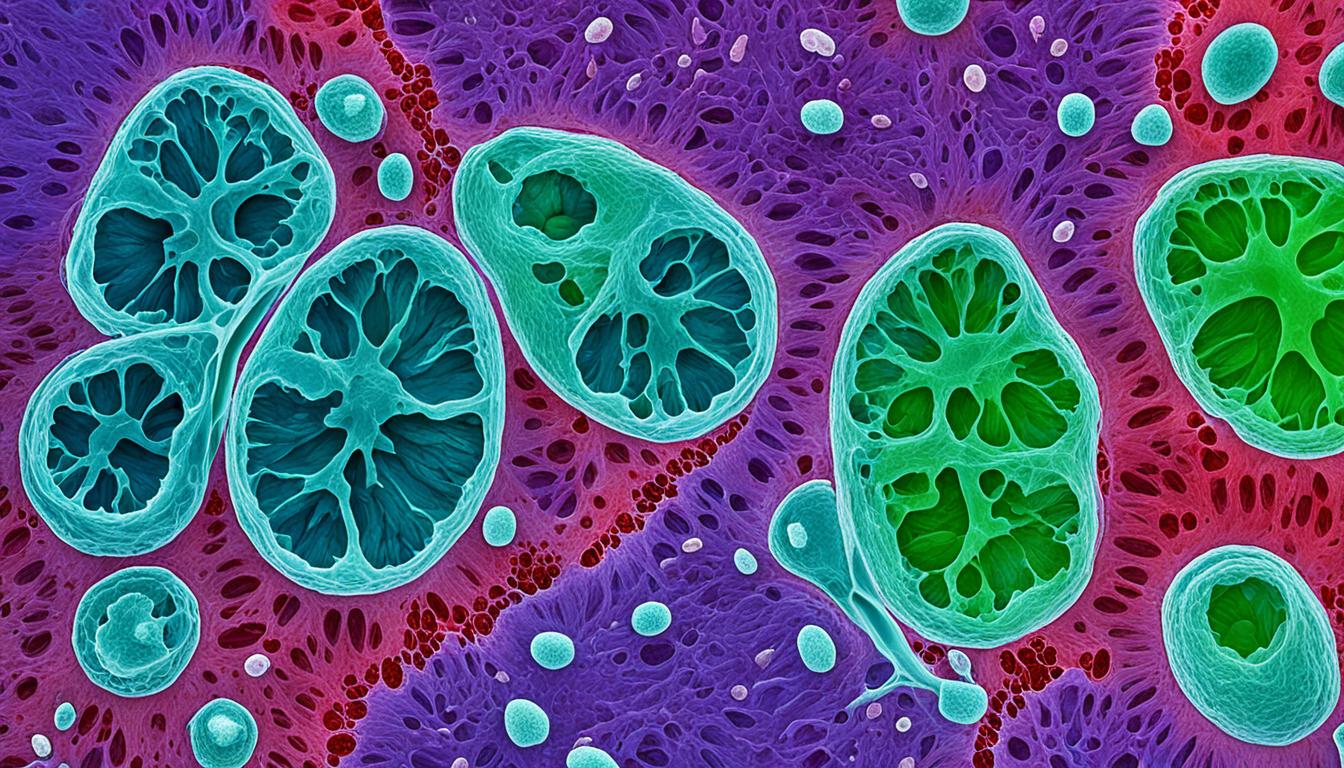Acute renal failure is a sudden loss of kidney function. It can happen for many reasons like dehydration, kidney damage, or certain drugs. This condition leads to various symptoms and complications when the kidneys fail to work right.
The symptoms are easy to spot. They include less urine, more fluid in the body, swelling, tiredness, and feeling confused. Acute renal failure really hits someone’s health hard.
Doctors diagnose this by using blood and urine tests. These tests find out how the kidneys are doing and what’s causing the issue. Then, the doctors can start the best treatment to help the kidneys work again.
Key Takeaways:
- Acute renal failure, or acute kidney injury, is characterized by a sudden loss of kidney function.
- Common symptoms include decreased urine output, fluid retention, swelling, fatigue, and confusion.
- Diagnosis involves blood and urine tests to assess kidney function and identify the underlying cause.
- Stem cell therapy may offer potential as a treatment option for restoring kidney function.
- Further research is being conducted to explore the regenerative properties of stem cells in kidney repair.
Warning Signs and Types of Kidney Disease
Kidney disease is when the kidneys get damaged and can’t clean the blood correctly. There are many types, each showing different signs.
Chronic Kidney Disease (CKD)
CKD is a kidney condition that gets worse over time. It’s often linked to conditions like high blood pressure and diabetes.
Glomerulonephritis
Glomerulonephritis damages the tiny kidney filters due to swelling. It can be short-term (acute) or long-term (chronic).
Polycystic Kidney Disease (PKD)
In PKD, the kidneys grow cysts that fill with fluid. This can make the kidneys big and, in serious cases, not work.
IgA Nephropathy
In IgA nephropathy, a chemical builds up and harms the kidneys. It can cause inflammation and hurt how the kidneys work.
Renal Cell Carcinoma
Kidney cancer starts in the kidney tubules’ cells. It can be found early because of symptoms like blood in the urine.
Reflux Nephropathy
Reflux nephropathy happens when urine goes back into the kidneys. It’s often seen in kids and can lead to CKD.
Acute Renal Failure
Acute renal failure is a sudden kidney function drop. It can happen from being too dry or from medicines. Signs include less pee, tiredness, and swollen body.
Proteinuria
Proteinuria is when there’s too much protein in the pee. It could be an early sign of kidney trouble.
Genetic Testing for Kidney Diseases
Testing your genes can show if you’re likely to have kidney problems. It helps doctors plan treatments that fit your needs.
Five Stages of Kidney Disease
CKD can go through five stages. Each one means more kidney damage. The last stage is when kidneys stop working fully.
To learn more, check the table below:
| Stage | Description | Kidney Function |
|---|---|---|
| Stage 1: Kidney Damage | Minimal kidney damage, typically no symptoms | Normal or mildly reduced |
| Stage 2: Mild Decline | Mild reduction in kidney function | Mildly reduced |
| Stage 3: Moderate Decline | Noticeable decrease in kidney function, symptoms may appear | Moderately reduced |
| Stage 4: Severe Decline | Severe reduction in kidney function, symptoms become more pronounced | Severely reduced |
| Stage 5: Kidney Failure | Kidneys can no longer function adequately, dialysis or kidney transplant may be necessary | End-stage renal disease |
Early finding and proper care can slow down kidney disease. If you see any signs, talk to a doctor for advice.
Stem Cell Therapy for Kidney Disease
Stem cell therapy is becoming important in treating kidney disease. It shows benefits for people with different kidney problems. A type called mesenchymal stem cells (MSCs) can help repair kidney tissue.
MSCs have been found to calm the immune system’s response. This is important because over-the-top immune reactions can harm the kidneys. So, easing this reaction helps the kidneys heal, improving their work.
For sudden kidney failure, stem cell therapy might help alongside other methods like transplantation. It’s not a total cure for kidney disease. But, it can improve how the kidneys work, often reducing the need for dialysis.
Scientists are still learning about how stem cells can fix kidneys. As we learn more and technology improves, stem cell therapy could be key to better treatment for kidney disease.

